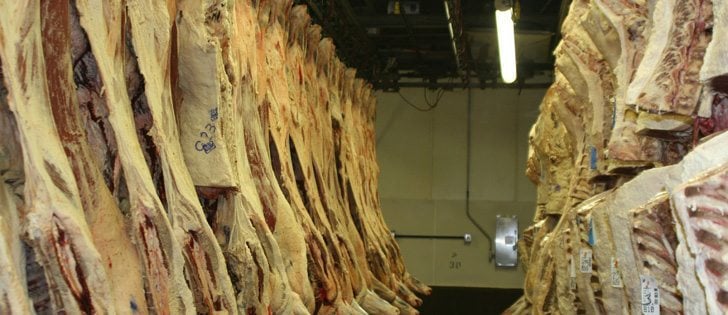Calving health has changed considerably over the years due to better genetics and more hands-off handling.
Newer, longer acting products as well as anti-inflammatory drugs help to get calves on their feet quicker and minimize relapses.
Daily treatments may still have a place in intensive care cases but the need is reduced significantly.
It is easy to catch sick calves the first time. But as the treatment takes hold and they get stronger, catching them for further treatments can be difficult and cause stress.
Read Also

Canadian Food Inspection Agency slammed for handling of bovine tuberculosis case
The federal government leans heavily on producers to “take one for the team” and risk their livelihoods without any reassurance of support.
A lot of the treatments I suggest for calves are prescription products and you need a valid client-patient relationship with your herd veterinarian to obtain many of these products.
Get your vet’s advice, show how the products are administered and get the tough cases examined.
A “Pr” on the side of the bottle means it is a prescription product and most if not all new products on the market, are prescription.
Young calves are pre-ruminant, which means that because they are on milk like a single stomach animal, the withdrawal times on the products may be altered.
I believe that because slaughter is a long time off, withdrawal time in these cases is a bit irrelevant. The withdrawals for the mature cattle give us a guideline from which to work.
The new products are sometimes not recommended for young calves because they may take out the normal bacteria in the gut. This means drug selection becomes critical.
Non-steroidal anti-inflammatory drugs that vets refer to as NSAIDs are being used with greater frequency in most calf diseases. They make calves feel better and help them get back on feed faster.
The newest such product is Metacam, which has two days, effect with a single shot. When used to treat severe scours, the product helped increase calves’ appetite and weight gains were better. Subtle things like gas pains with scours were also reduced.
This was always given along with the standard electrolytes and antibiotics, which accompany scours treatments.
These ancillary treatments are an integral part of managing scours and other systemic illnesses in calves.
On advice from their veterinarian, most producers will carry one form of NSAID with them in their treatment kit. Response times and recovery rates are greatly improved. The cost of treatment is low because of the calf’s small body size.
Some products are delivered subcutaneous, some are intramuscular and others are intravenous so ensure you know the right delivery method for the product.
I have found that unless a calf is older or bigger, there is not much muscle on the neck so I give intramuscular shots in the back leg muscles. I come in directly from behind.
These are the semi-membranous and semi-tendinous (back thigh) muscles that are not the prime cuts. Also, there is no risk here of damaging the sciatic nerve, which can affect walking. This is the only time I give intramuscular shots in a location other than the neck.
Have product ready and the correct needle size and length. For most intramuscular products in calves, I use an 18 or 20 gauge needle one inch in length.
With many farms now employing later calving, cattle are spread out over greater acreage so it is often imperative to treat with longer acting products, or in severe cases, to bring the cow-calf pair in and treat daily.
Calf catchers or good ropers work and it is beneficial if the calf doesn’t have to be caught again.
One producer I know leaves a light lariat tied over the calf to help with daily treatment.
When the next treatment time arrives, the producer drives his quad over the end of the rope. The calf is caught with a minimum of stress.
There are long acting products specifically for pneumonia but one has a broad spectrum for both pneumonia and bacterial scours organisms. Excede lasts seven to 10 days in the system and has a low dose of 1.5 cc per 45 kg. It is administered in the ear like an implant.
This product has been approved in the United States for injection at the base of the ear. Hopefully it will be approved in Canada.
A lot of the previously effective scour products have been removed from the market and because scour tablets end up in the rumen, most veterinarians lean toward injectable products for quicker absorption.
If treating coccidiosis, the older generation sulfa drugs are still effective. Coccidiosis hits calves when they are several weeks old when the rumen is becoming developed so the sulfa tablets (either daily or long acting) work fairly well.
Consult your veterinarian every spring to check out the current treatment of scours and other neonatal diseases you could encounter on your farm.
Death losses can be decreased with prompt treatment. It is gratifying to see a calf you pulled through in the spring become a healthy weaned calf.














